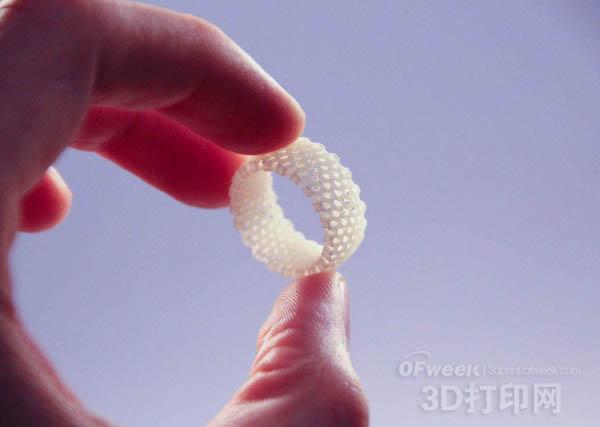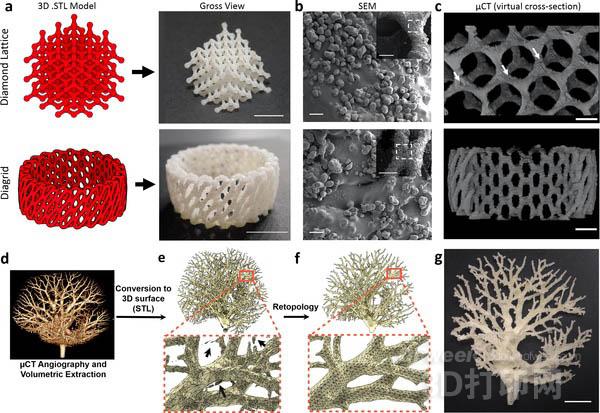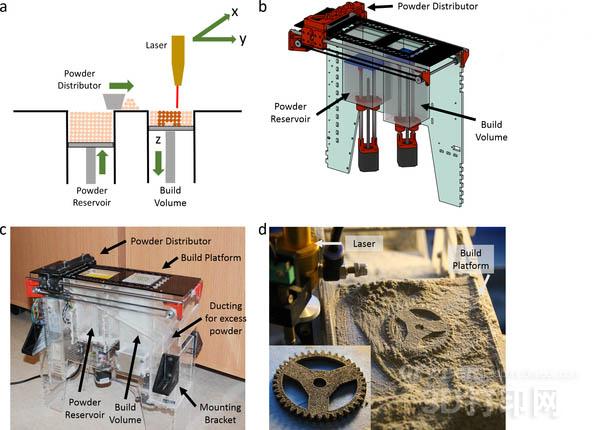Biologists convert laser cutting machines into low-cost SLS 3D printers
Recently, bioengineering researchers at Rice University converted a commercial-grade carbon dioxide laser cutting machine into an open source selective laser sintering (SLS) 3D printer . This is named OpenSLS 3D printer can print powdered plastic material 3D object. The researchers wrote the results in a paper published on PLoS ONE.
It is understood that the performance of this open source OpenSLS is similar to the SLS 3D printer sold on the market, but the cost is much lower. The former uses a low-cost open source microcontroller with a total construction cost of less than $10,000. The commercial SLS 3D printer market typically starts at $400,000 and some can cost as much as $1 million.

Jordan Miller, co-author of the study and assistant professor of bioengineering at the school, said that they hope to use SLS technology to create complex shapes that are often used in research, such as the vascular network of the liver, which is common FDM 3D printing. Technology can't do it. Professor Miller's professional direction is to use 3D printing for tissue engineering and regenerative medicine.
He said that current SLS 3D printers on the market generally do not allow users to use their own powder materials to print objects, but researchers hope to try a variety of biological materials for biomedical fields such as regenerative medicine. It was for this reason that they decided to design their own SLS 3D printer.
According to Ian Kinstlinger, a graduate student at the Miller team, the SLS 3D printer can use nylon and polycaprolactone (PCL) powder to print complex objects. PCL is a non-toxic biomaterial that is commonly used in tissue engineering to make research objects. Kinstlinger added: "We have open sourced all the hardware and software designs and put them on GitHub to share with everyone."

It is reported that Miller is an active participant in the open source maker movement outside of the profession. It was he who decided to convert a commercial grade CO2 laser cutting machine into a widely used SLS 3D printer in early 2013. Laser cutting machines typically use laser cutting materials to create a specified shape.
“The laser wavelength of this cutting machine is just in the right range – around 10 microns, and it also has the hardware to control the laser power, in addition to its X-axis and Y-axis accuracy,†Miller said.

In the summer of 2013, Miller hosted a four-week crash course for hardware prototypes. One of the class's participants, artist and engineer Andreas Bastian accepted the challenge of creating an open source SLS printer. He designed an integrated, high-precision Z-axis and powder handling system for Miller's laser cutting machine and installed electronic components for open source 3D printers purchased online.
Miller said that Bastian and even the laser cutter made a lot of acrylic parts for assembling the powder processing system. “It took about $2,000 to build OpenSLS parts, and it took a couple of days to assemble these parts with the existing laser cutters, plus debugging.â€
By the time Bastian left Rice University in the fall of 2013, “we have passed proof of concept,†Miller said. “But there is a lot of extra work to prove the role of OpenSLS in bioengineering. This is Ian and Other members need to do the work."
Miller said that Kinstlinger has mainly experimented with PCL materials, a biocompatible plastic that can be used to make human implants, which is especially important for bioengineering researchers.
"Complex 3D printed structures are useful in human biology, but different shapes and surfaces have different applicability to different environments," Miller said. In some cases, rough surfaces and interconnected pore structures are required, but some biological applications require a smooth surface, Kinstlinger added.

But in general, the surface of the object printed by the SLS 3D printer is relatively rough, so Kinstlinge has found an effective way to smooth the surface of the object printed by OpenSLS 3D. He found that exposing the printed parts to solvent vapor for a short period of time (about 5 minutes) made the surface very smooth.
In addition, Kinstlinger also used human bone marrow mesenchymal stem cells, a kind of adult stem cells that can differentiate into bones, skin, blood vessels and other tissues. He found that smoothed PCL structures are being organized. Works very well in engineering, it has properties similar to natural bone. "Stem cells bind to the surface of the structure, survive and differentiate into bone systems, depositing calcium salts throughout the scaffold," he said.
Miller said, "Our work shows that OpenSLS provides a convenient platform for the scientific community to study laser sintering and the use of different materials to create complex geometries. This is another victory for the open source community."
Industial Vinyl Glove
1.Type:Powdered or Powdered free vinyl glove .
2. Different colour :Nature ,Blue ,white ,yellow etc.
3. Passed CE,FDA510K ,EN455,EN374,ISO9001,ISO13485 Certifications etc.
4.Medical grade and Industrial grade ,food grade ,electronic grade and so on,AQL:1.5,2.50,4.0 ;
5.Size: S,M,L,XL,XL etc. and weight as your requirement.
6.no latex and non sterile
7.beaded cuff;sigle use only
8.soft and comfortable.
9.OEM or ODM packing.
10.usage widely for hospital medical examination,health care,hotel ,restaurant ,home cleaning etc
Industrial Grade Vinyl Glove,Vinyl Industrial Gloves,Disposable Industrial Grade Vinyl,Food Gloves
Zibo Hongye Shangqin Medical Science and Technology Co.,Ltd. , https://www.vinylgloves.cn